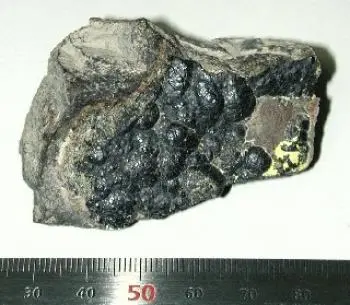
Uranium is a silver-colored chemical element found naturally in the earth's crust. The physical composition of its nucleus of 92 protons makes it an ideal material for the development of nuclear energy. The main use of uranium is as fuel for the reactors of nuclear power plants.
In a broad sense, natural uranium refers to uranium resources in nature (including uranium ore and uranium contained in seawater) and those that have the same isotopic composition as uranium in nature. In a strict sense, it refers to metallic uranium and its compounds (oxides, fluorides, carbides, nitrides). When used in comparison with enriched uranium and depleted uranium, it is used in this limited sense.
Natural uranium mined uranium contains approximately 99.3% isotope 238, and 0.7% isotope 235. Of these, uranium 235 radioisotopes can be used as nuclear fuel in a nuclear reactor.
At the beginning of the 21st century, the most widely used type of reactor to generate electricity in the world is the light water nuclear reactor. Mined natural uranium is converted to enriched uranium by increasing the proportion of uranium 235 in uranium enrichment plants for use in light water reactors. Uranium that is not concentrated is called natural uranium with respect to concentrated uranium.
Where is uranium found in nature?
Uranium in nature is widely distributed in the earth's crust and seawater, and is estimated to be 40 times more than silver and tin. Among them, the proven recoverable reserves are estimated at 5.47 million tons.
The top nations with uranium concentrations are Australia, Kazakhstan, Canada, South Africa, and the United States, in descending order of reserves. It is possible that the Democratic People's Republic of Korea (Republic of Korea, Japan Atomic Energy Industry Council) with an estimated 4 million tonnes of mineable reserves could exceed Australia's number one proven reserve.
Formation and origin of natural uranium
Like other elements with an atomic number higher than iron, uranium formed in supernovae. The main isotopes of uranium were 235-U, 238-U and 236-U, which, due to the short half-life, had been completely transformed into Thorium.
When planet Earth was formed, the concentration of the 235-U isotope was about 3% compared to 0.711% today. Therefore, a higher initial concentration of 235 U was able to trigger a fission chain reaction under appropriate conditions. In this way, one of the few natural nuclear reactors was created, which was located in Gabon, Africa, at the Oklo uranium deposit.
Risks and effects on human health
Natural uranium is a radioactive chemical element that poses certain risks to human health and the environment if not handled properly.
One of the main dangers of natural uranium is its emission of ionizing radiation. This radiation consists of alpha particles, beta particles, and gamma radiation, which can penetrate living tissue and damage cells and DNA, increasing the risk of cancer and other radiation-related diseases.
Inhalation of uranium particles in the form of dust or aerosols represents another significant risk. When these particles are inhaled, they can reach the lungs and cause lung damage, as well as other health problems.
In addition, uranium contamination of water and soil can also be a problem. Uranium can seep into bodies of water and soil, affecting ecosystems and the food chain.
People who work in uranium mines or in the nuclear industry are exposed to higher levels of radiation and are therefore at greater risk of adverse health effects if proper precautions are not taken.
To mitigate the risks associated with natural uranium and other nuclear materials, strict regulation and control is required by government authorities and international bodies, such as the International Atomic Energy Agency (IAEA).
Major uranium mines in the world
some of the major active uranium mines in the world included:
-
Cigar Lake (Canada): Located in Saskatchewan, Canada, it is one of the largest uranium mines in the world. It is operated by Cameco Corporation and produces high grade uranium.
-
McArthur River (Canada): Another major mine located in Saskatchewan, Canada, also operated by Cameco Corporation. It is known for its high grade uranium deposits.
-
Olympic Dam (Australia): Located in South Australia, this mine is operated by BHP Billiton. In addition to uranium, it also produces copper, gold, and silver.
-
Rossing (Namibia): Located in the Namib desert, it is one of the largest and oldest uranium mines in the world. It is operated by Rio Tinto.
-
Husab (Namibia): Also located in Namibia, the Husab mine is one of the largest uranium mines under development. It is operated by China General Nuclear Power Group (CGN).
-
Inkai (Kazakhstan): Located in Kazakhstan, it is a joint venture between Cameco Corporation (Canada) and Kazatomprom (Kazakhstan). It is an important source of uranium for the international market.